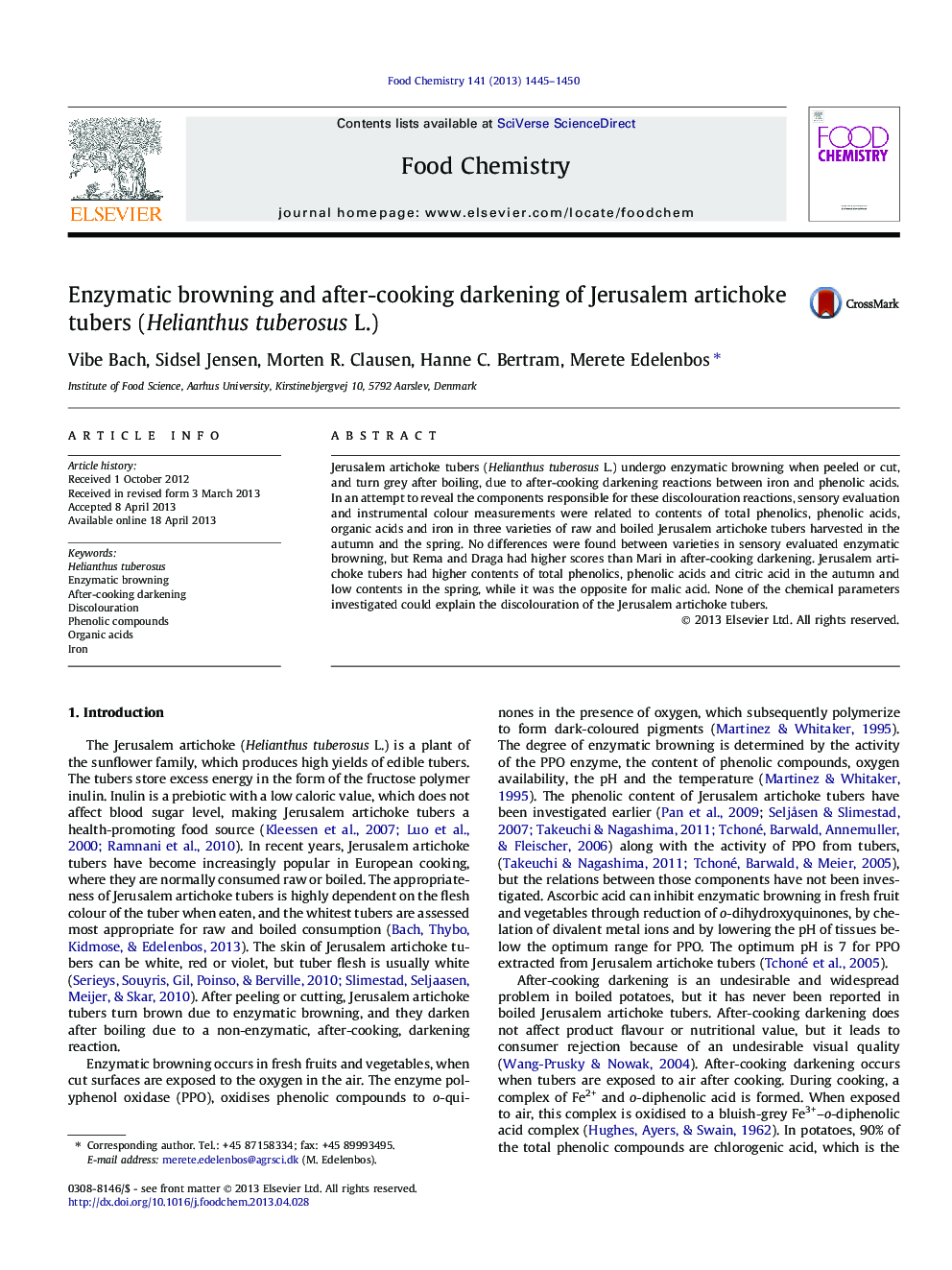| Article ID | Journal | Published Year | Pages | File Type |
|---|---|---|---|---|
| 1187172 | Food Chemistry | 2013 | 6 Pages |
•Discolouration of Jerusalem artichokes was measured by instrumental colour analysis.•Sensory analysis of colour attributes of raw and boiled tubers was performed.•Contents of total phenolics, phenolic acids, iron and organic acids were analysed.•Enzymatic browning was the same independent of variety and harvest time.•Analysed constituents could not explain discolourations of raw and boiled tubers.
Jerusalem artichoke tubers (Helianthus tuberosus L.) undergo enzymatic browning when peeled or cut, and turn grey after boiling, due to after-cooking darkening reactions between iron and phenolic acids. In an attempt to reveal the components responsible for these discolouration reactions, sensory evaluation and instrumental colour measurements were related to contents of total phenolics, phenolic acids, organic acids and iron in three varieties of raw and boiled Jerusalem artichoke tubers harvested in the autumn and the spring. No differences were found between varieties in sensory evaluated enzymatic browning, but Rema and Draga had higher scores than Mari in after-cooking darkening. Jerusalem artichoke tubers had higher contents of total phenolics, phenolic acids and citric acid in the autumn and low contents in the spring, while it was the opposite for malic acid. None of the chemical parameters investigated could explain the discolouration of the Jerusalem artichoke tubers.
